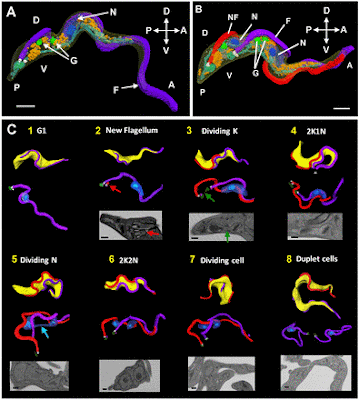Molecular Cell - Volume 65, Issue 4, p631–643.e4, 16 February 2017
Comparative Analysis of Single-Cell RNA Sequencing Methods
Christoph Ziegenhain, Beate Vieth, Swati Parekh, Björn Reinius, Amy Guillaumet-Adkins, Martha Smets, Heinrich Leonhardt, Holger Heyn, Ines Hellmann, Wolfgang Enard7,'Correspondence information about the author Wolfgang EnardEmail the author Wolfgang Enard
7Lead Contact
Article Info
Publication History
Published: February 9, 2017 Accepted: January 17, 2017 Received in revised form: December 1, 2016 Received: August 8, 2016
Highlights
•The study represents the most comprehensive comparison of scRNA-seq protocols
•Power simulations quantify the effect of sensitivity and precision on cost efficiency
•The study offers an informed choice among six prominent scRNA-seq methods
•The study provides a framework for benchmarking future protocol improvements
Summary
Single-cell RNA sequencing (scRNA-seq) offers new possibilities to address biological and medical questions. However, systematic comparisons of the performance of diverse scRNA-seq protocols are lacking. We generated data from 583 mouse embryonic stem cells to evaluate six prominent scRNA-seq methods: CEL-seq2, Drop-seq, MARS-seq, SCRB-seq, Smart-seq, and Smart-seq2. While Smart-seq2 detected the most genes per cell and across cells, CEL-seq2, Drop-seq, MARS-seq, and SCRB-seq quantified mRNA levels with less amplification noise due to the use of unique molecular identifiers (UMIs). Power simulations at different sequencing depths showed that Drop-seq is more cost-efficient for transcriptome quantification of large numbers of cells, while MARS-seq, SCRB-seq, and Smart-seq2 are more efficient when analyzing fewer cells. Our quantitative comparison offers the basis for an informed choice among six prominent scRNA-seq methods, and it provides a framework for benchmarking further improvements of scRNA-seq protocols.
Keywords: single-cell RNA-seq, method comparison, transcriptomics, power analysis, simulation, cost-effectiveness
+++++
Professores, pesquisadores e alunos de universidades públicas e privadas com acesso ao Portal de Periódicos CAPES/MEC podem ler gratuitamente este artigo da Molecular Cell e de mais 30.000 publicações científicas.






















